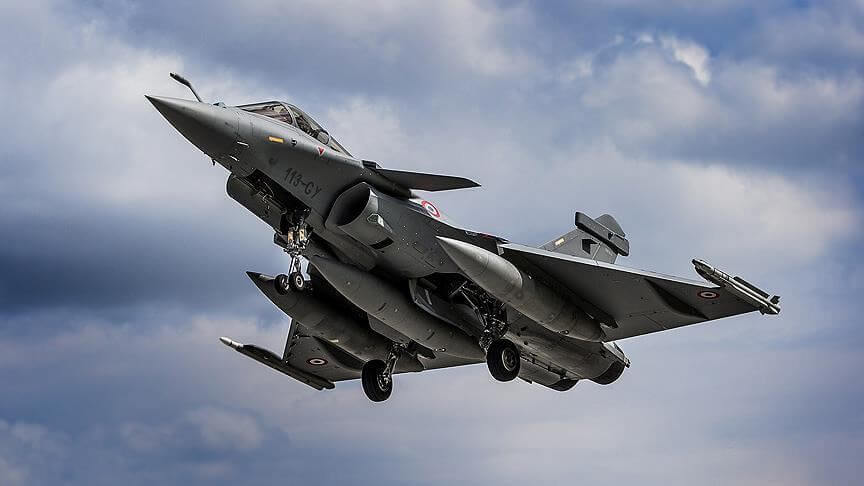France is developing an advanced version of its Rafale fighter aircraft that would come with enhanced stealth, powerful electronic warfare systems, and new weapons.
The F4 generation of the Dassault Rafale is backed by an investment of $2.3 billion by the French defense ministry, announced in January 2019.
The latest F4 version will see the incorporation of new generation technologies, especially enhanced aircraft connectivity, through software-defined radio, new links, and satellite communications.
The aircraft will also test the latest innovations in cross-platform connectivity and collaboration, a technology which France and Germany aim to incorporate into their joint sixth-generation fighter.
Rafale F4 Fighter Jet
The Rafale F4 will come with improvements in the RBE2 AESA radar, Talios targeting pod, front sector optronics system, and helmet-mounted display capabilities. The aircraft’s Spectra defensive system will receive improvements to maintain its ability to deter emerging threats and include more powerful jammers.
The aircraft will see the integration of future upgrades of the French SCALP-EG stealthy subsonic cruise missile, ASMP-A nuclear missile involving which carries a 300-kiloton-yield nuclear warhead, MICA NG air-to-air missile, and a 1000-kg version of the AASM precision-guided weapon.
The upgraded Rafale will have its architecture improved to enable future technology insertions and modifications as they become available.
The French air force expects Dassault to implement Standard F4 in two increments – the first in 2023 and the second in 2025. The first batch will consist of the F4.1 version with 28 aircraft already contracted, while the 30 aircraft of the F4.2 version will be due for delivery by 2030.
The F4 version will significantly improve the 4.5-generation fighter’s stealth capabilities, which although present in earlier versions to some extent failed to compete with fifth-generation combat aircraft.
The US’ F-35 in comparison boasts of far superior stealth capabilities. Although Rafale features absorbent composite materials and lightweight titanium in its wings and fuselage, the stealth offered is not sufficient to avoid detection.
Other features that enhance the stealth of the Rafale include the S-shaped air intakes, serrated edges, and a channel exhaust cooling scheme aimed to reduce infrared signature.
All these features enable the Rafale to have an estimated Radar Cross Section (RCS) of around one square meter, the same as the jets like the Super Hornet and Typhoon. The F-35s feature a far smaller radar cross-section.

Rafale F4s are supposed to replace France’s Mirage 2000s aircraft, which still number about 110 with the French armed forces today. According to French media reports, there is a plan to upgrade all the older Rafale jets to the F4 version.
Rafale F4 – Any Potential Customers?
Dassault has sold the Rafales to Egypt, Qatar, and India so far, and reports of these countries ordering additional Rafales have been doing rounds in the respective countries.
The French company is reported to have even offered the F4 version to the Indian air force, where the demand for the latest generation aircraft remains high.
In fact, the IAF chief RKS Bhadauria during his upcoming visit to France around April 20-22 is reportedly going to be debriefed about the F4 standard Rafales.
Dassault will complete all deliveries of 36 aircraft to India by this year, and there is expected to be another deal for the Rafale aircraft by India for more jets, which experts say would definitely be the F4 standard.
Experts believe such a deal is highly possible given that the earlier Rafale order of 36 aircraft hardly made a dent in India’s alarming shortfall in its required squadrons.
With such shortfalls, India will not stop looking for more fighters that meet its requirements, and there’s no jet better than Rafale that captures the Indian imagination better.
Follow EurAsian Times on Google News




